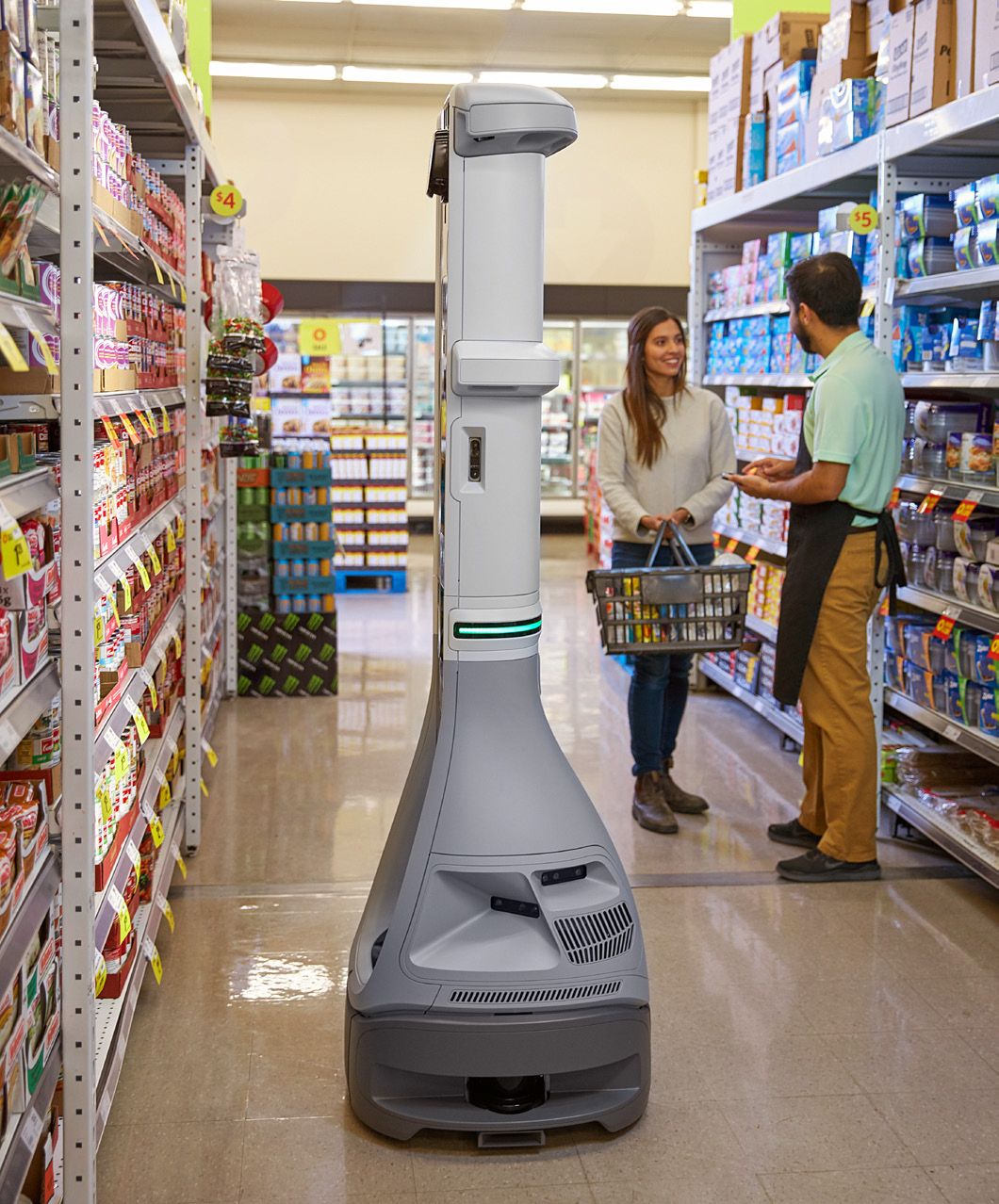The future of retailing in the ‘new normal’: It’s all about real-time inventory visibility. Zebra Technologies provides a range of sensor technology, software, mobile computing products, analytics solutions, and more, to empower teams on the front-line of retail. By providing employees with realtime access to intelligence, anywhere they need it, they are always able to take their next best move.
Recently Manhattan’s Jon Liberman Vice President, Enterprise Mobility, sat down with Drew Ehlers, Zebra’s Global Futurist, and GM for SmartPackTM. In their online discussion they spoke about the challenges of the ‘new normal’ and how retailers can get ahead of rapidly changing customer expectations and compliance requirements. From the need for total real-time inventory visibility to the role for robotics, we take a look at the highlights of their conversation below.
From all of the newness what we’re seeing, what is Zebra doing to make the shopping experience more frictionless for the customer and retailer?
Drew spoke about the need to offer the best customer experience by allowing people to select the fulfilment modality that best works for them. This means providing versatile fulfilment options – from click & collect – kerbside or in-store, to home delivery, with the options for pick-up and returns from kiosks or convenience stores closer to home. Central to this versatility is the need for a continuously updated view of inventory across the business.
Inventory visibility is especially important for kerbside delivery, that’s become hugely popular. Indeed, ensuring that associates know what orders they’re meant to be processing – and when – avoids any issues that can prolong contact with customers (and create social-distancing issues). Drew also spoke to the need to plan a smooth journey for shoppers who wish to visit the store. And that means ensuring stock levels are as expected – again emphasising the value of inventory accuracy.
Predictive analytics can tell you where stock needs to be ahead of time to accelerate fulfilment.
 How can complete visibility be achieved?
How can complete visibility be achieved?
Achieving continuous inventory visibility means moving away from slow processes. For example, tasks such as batch processing updates overnight can cause inventory blind spots and impair effective fulfilment. Drew also recommends reviewing the tech stack, and to discuss with partners such as Manhattan, about how to ensure data integration across all key retail fulfilment systems to enable inventory visibility.
Drew highlighted too the greater need to embed RFID more widely into operations. RFID tags give items a ‘digital voice’. That voice can be read constantly by fixed readers to track the location of items. Traditionally used in warehouses, there’s now a greater need for the technology to be used in stores. This is because stores are increasingly being used to fulfil orders and the efficiencies fi ne-tuned in warehouses over decades can be applied to help associates pick orders with greater efficiency.
Deploying new technology also has a role to play in achieving inventory visibility. RFID is an essential component of Zebra’s SmartLens™ solution that turns the retail floors into smart spaces; spaces that provide a continuous view over the location of merchandise, associates, shoppers and assets. SmartLens also provides actionable insights based on what it’s seeing to help teams make effective decisions and boost competitive advantage.
There’s also an increasing role for using predictive analytics in inventory planning. Zebra Prescriptive Analytics includes machine learning algorithms that can be added as an overlay to any inventory system. It can give you predictions by zip code – and down to an individual – of what people are going to buy. The accuracy level is around 85 percent provides the insight to understand where stock needs to be – ahead of time – to fulfi l orders quickly.
"Good visibility on your real-time inventory. That's foundation #1... Things like batch analytics overnight? That's not going to cut it anymore."
Drew Ehlers
If an era of more kerbside pick-ups how can retailers ensure they don’t lose out on the upsell opportunity?
Turning to the potential loss of spontaneous sales that occur when people come into store, the conversation switched to the need to make sales platforms more intelligent. This includes offering more recommendations based on basket contents. Also, it’s important to offer customers the scope to amend their orders as late as possible – even down to two hours before their pick-up slot.
Looking ahead what other changes will emerge as we adjust to these unique times?
Drew and Jon identified computer and machine vision as a technology that has a lead role to play in the future of retail. A good example is Zebra’s SmartSight™ front-of-store robot. It uses these technologies to direct associates to restock shelves, fi x pricing and amend planogram issues before customers realise there’s a problem. The solution helps manage the increased demand for in-store picking and frees associates to focus more on customers and less on operational tasks. On average, retailers using SmartSight can re-assign an average of 65 associate hours per associate, week.
Tune in to see more: A number of Zebra executives will feature on Manhattan’s EMEA Exchange Connect 2020. Held over 6 October, and beyond, the team will speak about unique retail solutions for unique teams, Zebra’s Fulfilment Edge Warehouse Management Software, and omnichannel strategies.
















Reacties 0